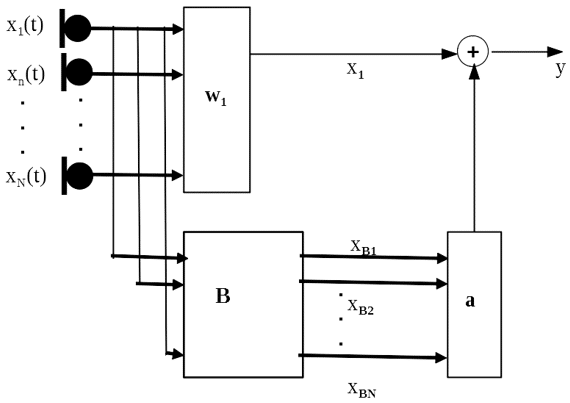Generalized Sidelobe Canceler can be considered as a special case of Linear constrained Minimum Variance (LCMV) beamforming. It is one of the early beamforming approaches in practice.

For LCMV, we formulate the linear constraints as below,
where c is the desired vector derived from the priori knowledge of the target source and C denotes a linear matrix which forces into the desired vector c. Obviously
may not be unique. A commonly chosen solution is
,
where is the minimum L2-norm solution. It is also referred to as the fixed beamformer.
With this fixed beamformer, we convert the original linearly constrained beamforming problem into a dimension-reduced optimization problem.
Let S be the subspace that defined as
and
,
we call B, the blocking matrix. Obviously, B is not unique. The following combination expands the entire beamforming space,
and
.
Therefore, the linear constraint imposed on LCMV is observed into the optimization objective function.
Now the problem can be easily solved with the standard Wiener solution,
The implementation can be naturally carried out in an iterative fashion. The involved computation is equivalent to the LCMV since B and are both pre-calculated.